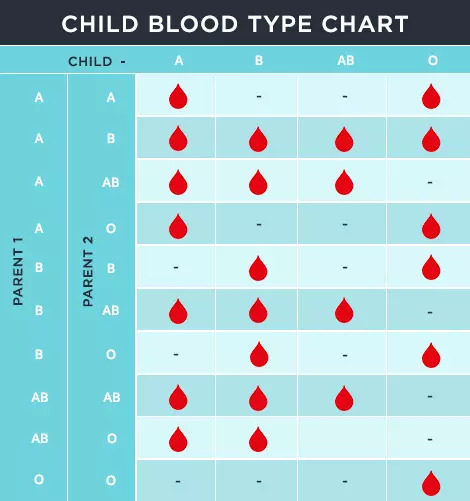Blood Type Determination
Blood groups were discovered in the 20th century when Karl Landsteiner observed that the red blood cells (RBCs) had specific substances (antigens) on their surfaces, which were later used to create blood types. The two important blood group classifications in humans are the ABO and the Rh systems. The ABO system has four major blood groups – A, B, AB, and O.
Blood type A has the antigen A, blood type B has the B antigen, AB has both antigens and O has no antigen on its surface (2). Each of these groups is either Rh positive (D) or Rh negative, which means there are eight major blood groups in all. Knowledge of both these systems is essential for medical reasons, especially blood transfusions.
The ABO Blood Group System:
The gene, ABO, determines this blood group system. The four blood groups – A, B, AB, and O develop when the child inherits one or more of the alleles – A, B or O. The alleles A and B are considered codominant while O is considered to be the silent allele. Each parent gives one of their two ABO alleles to the child (3).
For instance – - Mother with AB blood type can either pass the A or B allele to the baby. Likewise, a father with O blood type can only pass O allele to the baby.
- If both parents belong to the blood group O, the child will also belong to the O blood group.
- Two A blood group parents can give their child either A or O blood group.
- Two B blood group parents can give their child either B or O blood group.
- One parent with A and another with B will give their child either A, B, AB or O groups.
- One parent with A and another with AB will give their child either A, B or AB groups.
- One parent with A and another with O will give their child either A or O blood group.
Rhesus (Rh) Blood Group System:
It is second most popular and also one of the complex blood types discovered by Landsteiner and Weiner in 1940. The research with rhesus monkeys on human blood led to the Rh factor, which can be either positive (+) or negative (-). With this blood grouping system, eight blood types were formed.
The Rh positive (Rh+) genotype masks the Rh negative (Rh-) gene. So even if you have an Rh+ blood type, you could possess an Rh- gene. Also, when both parents have the Rh+ gene, it is possible for the child to have Rh- blood type(4).
| Parental Rh type | Child's Rh type |
|---|
| + and + | + or - |
| + and - | + or - |
| - and - | - |
While blood groups are 100% genetically inherited, the environmental influences determine which groups are passed on more frequently to the next generations. According to the American Red Cross, B(-), AB(-) and O(-) are the rarest blood types and each account for less than 5% of global population.





